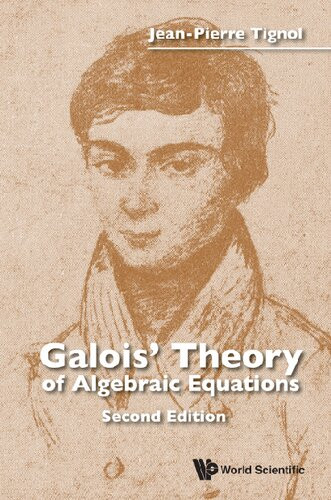

Most ebook files are in PDF format, so you can easily read them using various software such as Foxit Reader or directly on the Google Chrome browser.
Some ebook files are released by publishers in other formats such as .awz, .mobi, .epub, .fb2, etc. You may need to install specific software to read these formats on mobile/PC, such as Calibre.
Please read the tutorial at this link: https://ebookbell.com/faq
We offer FREE conversion to the popular formats you request; however, this may take some time. Therefore, right after payment, please email us, and we will try to provide the service as quickly as possible.
For some exceptional file formats or broken links (if any), please refrain from opening any disputes. Instead, email us first, and we will try to assist within a maximum of 6 hours.
EbookBell Team

4.0
46 reviewsThe book gives a detailed account of the development of the theory of algebraic equations, from its origins in ancient times to its completion by Galois in the nineteenth century. The appropriate parts of works by Cardano, Lagrange, Vandermonde, Gauss, Abel, and Galois are reviewed and placed in their historical perspective, with the aim of conveying to the reader a sense of the way in which the theory of algebraic equations has evolved and has led to such basic mathematical notions as "group" and "field".
A brief discussion of the fundamental theorems of modern Galois theory and complete proofs of the quoted results are provided, and the material is organized in such a way that the more technical details can be skipped by readers who are interested primarily in a broad survey of the theory.
In this second edition, the exposition has been improved throughout and the chapter on Galois has been entirely rewritten to better reflect Galois' highly innovative contributions. The text now follows more closely Galois' memoir, resorting as sparsely as possible to anachronistic modern notions such as field extensions. The emerging picture is a surprisingly elementary approach to the solvability of equations by radicals, and yet is unexpectedly close to some of the most recent methods of Galois theory.